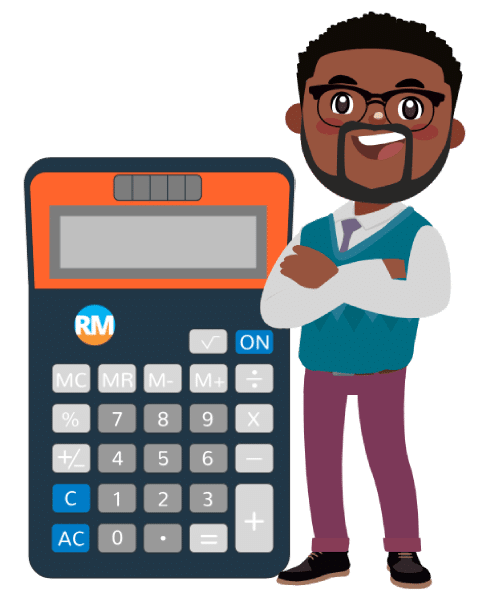So, you’re self-employed and looking for a mortgage.
But what income figure do lenders need when you work for yourself?
They will obviously want to know how much you earn in a year, but is this the gross profit figure or the net profit?
When you run your own business, whether as a sole trader, in a partnership, or owning a company, the way lenders assess your income can seem complex.
Put simply, a self-employed mortgage is based on the net profit figures, which takes account of all expenses and running costs.
The exact figure you give to the lender will depend on the nature of your self-employment. Read on and we will explain.
Self-employed mortgages
We have plenty of information on self-employed mortgages, in fact there’s a dedicated page for them here.
It would probably surprise you then if we said that self-employed mortgages didn’t actually exist.
It’s true that self employed borrowers are subject to different rules regarding how they prove their income, but the range of interest rates and options is the same as for any other borrower.
When we talk about a self employed mortgage, what we really mean is a lender that fully understands self-employment and is happy lending money to people that work for themselves.

What does gross profit mean?
Gross profit is a financial term that refers to the basic profit a business (or sole trader) makes after deducting the direct costs associated with producing and selling its products or the costs associated with providing its services.
So a gross profit figure would not take these costs into consideration:
- Rent
- Marketing
- Utilities
- Admin costs
- Professional fees
- etc
While gross profit is a useful metric in understanding the performance of a self-employed individual’s business, it would be mostly used by accountants and business owners.
And it only shows part of the picture.
For mortgage purposes, lenders will focus on net profit as it more accurately represents the personal income available for mortgage repayments.
A sole trader is an individual running a business as a single owner. They would own 100% of the business.
To calculate the basic gross profit you would deduct the cost of materials and cost of goods sold, from the overall income received.
A partnership involves two or more individuals (or entities) who run a business together.
The initial gross profit calculation is similar to a sole trader. All direct costs associated with the production of goods or services would be deducted form the partnerships overall income.
Partnerships can have different ownership percentages. So the gross profit figure can be further refined by applying the shareholding percentage.
A company is a legal entity separate from its owners (shareholders). It has its own legal rights and liabilities and is taxed separately from its owners.
Gross profit is again total income minus direct costs. These can include material costs, direct labour, and manufacturing overheads.
What does net profit mean?
Net profit takes all other business and trading costs into consideration. Consequently, the net profit figure will be lower than the gross profit figure.
It is essentially total income less total expenses.
For a self-employed sole trader, this figure represents their gross annual income before personal tax.
Your net profit calculation forms the basis for assessing mortgage eligibility and affordability.
A sole trader is an individual running a business as a single owner. They would own 100% of the business.
All of the net profit figure is the sole-traders personal, gross income. This figure can be used as earnings for a mortgage application.
A partnership involves two or more individuals (or entities) who run a business together.
Partnerships can have different ownership percentages. So the net profit figure needs to be further refined by applying the shareholding percentage.
This then gives you the gross personal income for an individual partner. This figure can be used as earnings for a mortgage application.
A company is a legal entity separate from its owners (shareholders). It has its own legal rights and liabilities and is taxed separately from its owners.
With a company structure there’s a few more stages before we get to personal income.
The net profit figure shows how much money has been made after all expenses and costs. This is before corporation tax.
The next step is to then work out the corporation tax and get to a net profit after taxation.
This sum of money would be available to distribute as a dividend to each shareholder. Upon receipt, this would be gross income as no personal tax has been deducted yet.
Profits which are undistributed can sit within the company accounts as retained profits. In theory this figure represents money due to the shareholders and some lenders will allow you to get a mortgage using retained profits as income.
Remember that turnover is not income It’s easy to get confused and believe that your turnover is your income. But lenders will only use your taxable personal income for mortgage assessments.
So, is a self-employed mortgage based on gross or net profit?
Lenders will always use the net profit figure as your income when assessing a mortgage application.
It’s the only figure that accurately shows what money you have made after all expenses have been accounted for.
Here’s a quick example:
A self-employed bathroom fitter has a business income of £160,000. But this will not be their income.
£50,000 of this was the cost of materials and parts.
And a further £15,000 went on professional fees, insurance, travel, marketing etc.
Leaving £95,000 as net profit before personal tax.

Before tax or after tax?
All lenders will want to use your gross personal income, before personal tax. This is the same for employed people or self-employed people.
Self-certifying your income
Don’t get your hopes up!
Self-cert mortgages are still not available.
These mortgages allowed anyone, to self-certify their income, as long as the loan to value was low. Around 75% or so.
Unsurprisingly, these mortgages were very popular with self-employed people who found it more difficult to prove their income.
The FCA banned them and they’re unlikely to make a return anytime soon.
You will find some additional information in our article: Are self cert mortgages still available?
How much can you borrow?
Lenders still use income multiples and most people can borrow 4 to 4.5 times their income.
This is, of course, using your gross personal income.
Ideally you should have 2-3 years worth of accounts, to give lenders a good idea of your regular income situation.
Calculating mortgage affordability is not just based on your annual earnings.
The size of your deposit, credit history and existing financial commitments and expenses all affect how much you could be offered.
You can use our mortgage calculator to get an idea of how much you can borrow.

CONTACT A MORTGAGE BROKER
If you are ready to take the next step then we can put you in touch with a fully qualified independent mortgage broker.
Proving your income
The documents needed to prove your income will vary according to the nature of your self-employed status.
Sole traders and partners will need business accounts and SA302 forms. And most likely personal bank statements.
Limited company directors will need to provide business accounts, business bank statements and SA302 forms. There are some lenders that will also consider undrawn dividends, or retained profits, which will increase your borrowing power.
Related pages:
SA302 explained
The SA302 Tax Calculation is a statement provided by HMRC that provides evidence of your earnings for a given tax year.
You can only get one if you have filed a self-assessment tax return.
You will have a different one each year, based on that year’s earnings. It is available electronically so you can email it, store it and print it.
Deposits
The amount of deposit that a lender needs won’t change just because of your employment status.
The minimum deposit tends to be 5-10%.
These low deposit mortgages won’t always have the best rates, due to the high LTV.
For most lenders, having a large deposit means a lower LTV percentage, and therefore better deals are available. A deposit of 20-25% should improve both the number of lenders and deals you can choose from.
You will find more useful information in our Guide To Deposits

How to apply
Applying for a mortgage as a self-employed person involves a few additional considerations compared to a standard application.
To give yourself the very best chance, put aside some time so that you can get your paperwork together and become ‘mortgage ready‘. You stand a much better chance if you are organised and have everything to hand.
Begin by assessing your financial health, focusing on your credit score and debt-to-income ratio. Gather important documents such as proof of income, bank statements, and identification.
Use mortgage calculators to estimate how much you can borrow, considering factors like income, expenses, and credit history.
Get an AIP
You want to avoid making an application which is then declined. Getting an Agreement in Principle (AIP) can help with this.
It can help give a ‘heads up’ for any issues that need dealing with.
Use a mortgage broker
A mortgage broker’s job is to find you the most suitable mortgage deal, from all those available.
Getting to that position takes a significant amount of work, especially for self-employed borrowers.
They can’t change your declared income for last year.
But they can look over your accounts and earnings figures to make sure everything looks right, before sending to a lender.
Different banks and lenders have different attitudes to income and earnings. Your broker’s role is to find one that matches you.
This process not only save you loads of time, it also reduces the possibility of having an application rejected.

Let us help
Let Respect Mortgages get you matched with a broker that knows about self-employed income, accounts and SA302 forms.
These are whole of market mortgage experts, who have access to over 100 lenders.
Ready to explore your options?
If you’re just about to start a new mortgage journey and could use the guiding hand of a professional, don’t hesitate to reach out to a reputable mortgage broker.
An independent mortgage broker can access over 100 lenders on your behalf. They will make the process smoother and more profitable than going it alone.
Keep reading, keep asking questions. The more you know, the better decisions you can make.






